MARIANI’S
Virtual
Gourmet
JUNE 16,
2019
NEWSLETTER
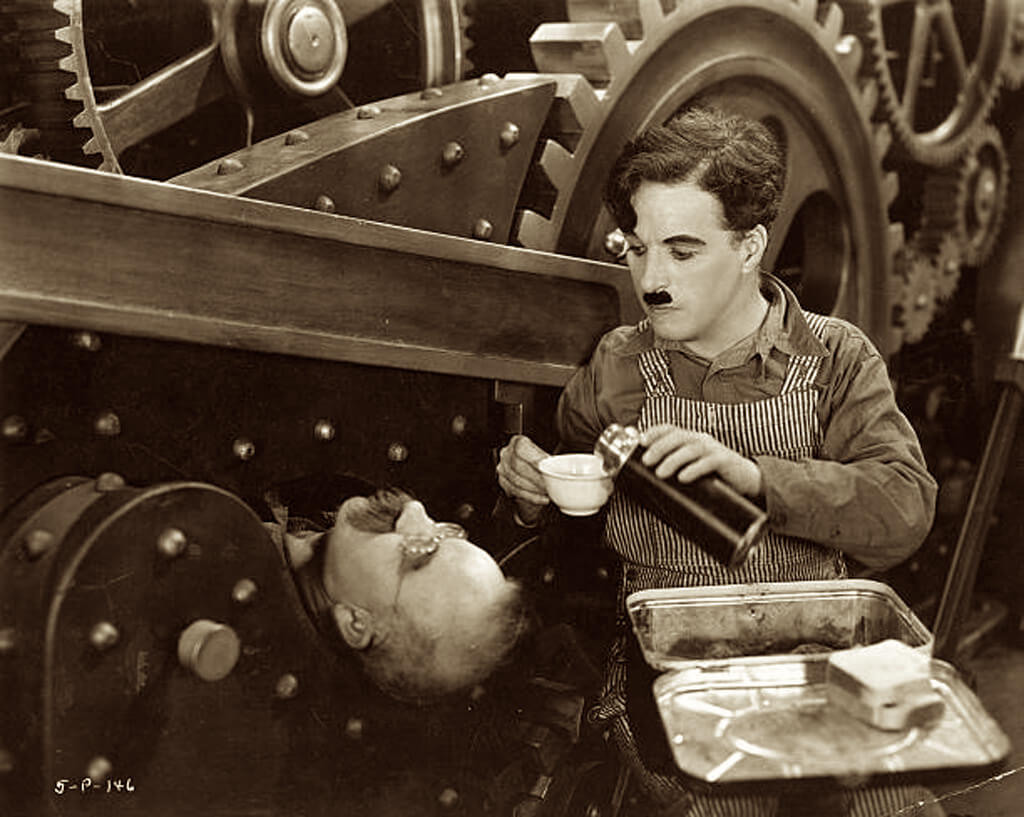
❖❖❖
IN THIS ISSUE
VEVEY AND MONTROSE,
SWITZERLAND
By John Mariani
Tamara Keefe's Naughty & Nice Creamery
Aims foe the Sweet and Boozy
By John Mariani
NEW YORK CORNER
RESERVE CUT
By John Mariani
NOTES FROM THE WINE CELLAR
THE WINES OF SWITZERLAND
By John Mariani
❖❖❖
VEVEY AND MONTROSE,
SWITZERLAND
By John Mariani
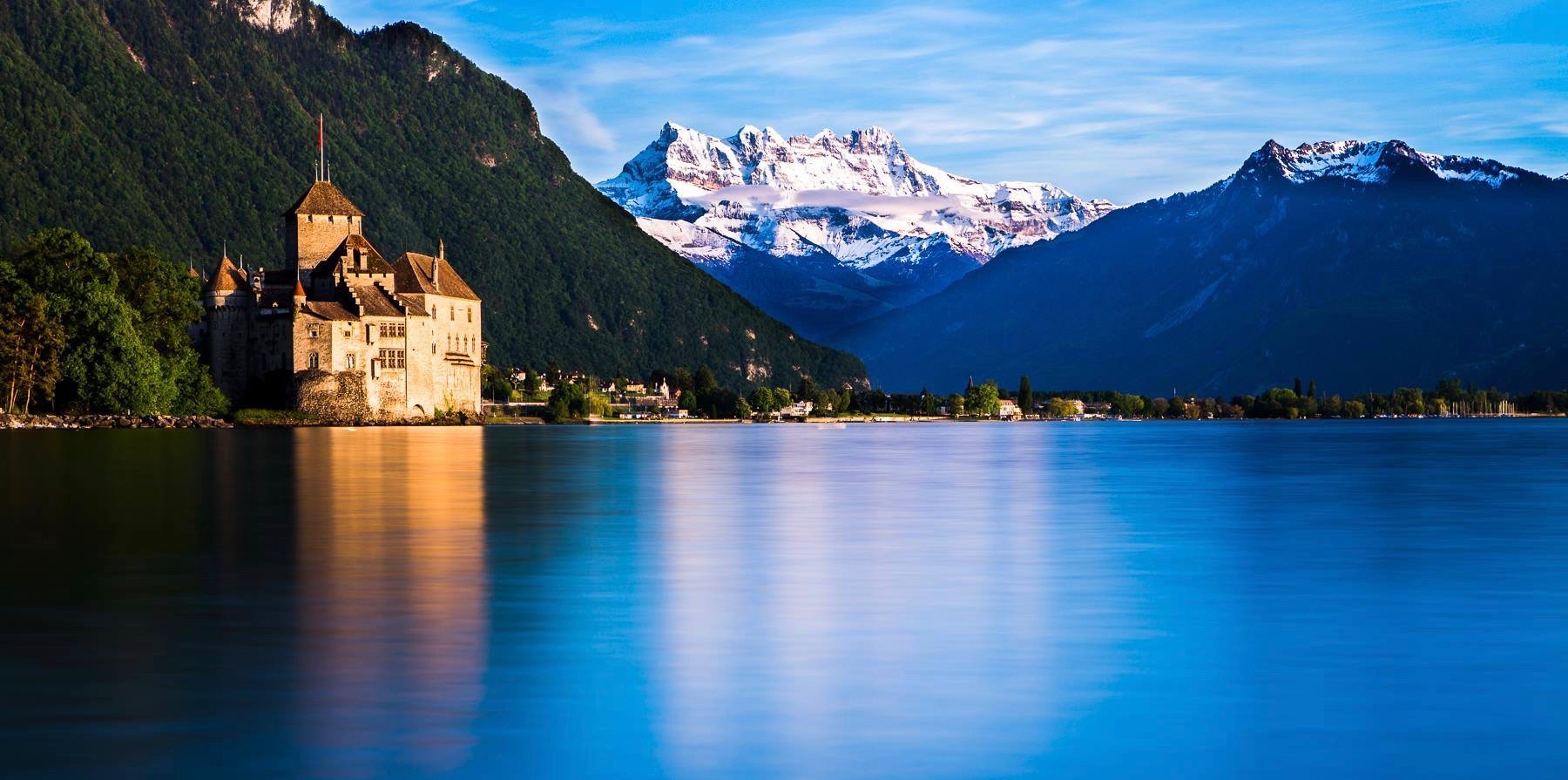
The Castle of Chillon
Photo courtesy of SwissTourism
Vevey
is a small Swiss city in Vaud at the foot of
Mount Pèlerin, with less than 20,000
inhabitants, so one can easily walk around in a
couple of hours on a leisurely stroll along the
Lake Leman waterfront, with the Savoy mountains
looming beyond. The antique Old Town, which has
its own history museum, is composed of quiet,
winding streets with storefronts holding
bakeries, restaurant, cafés and boutiques. The sheer
calm of Vevey makes up a good deal of its charm.
Yet Vevey is also a
very vibrant city, with great cultural history
behind it—here it was that Jean-Jacques Rousseau
wrote his tremendously popular romantic novel Julie, or the New Heloise
(1761)—and it is in close proximity to Vaud’s wine
country, Montreux and Chillon. The local bus and
train system makes Vevey a good city in which to
stay put so as to venture out to other places in
the Vaud environs.
Beginning July 18, Vevey will
hold its three-week-long Fêtes des Vignerons, an
event that occurs every 20 years or so and dates
back to 1797. (I am writing more about this in my
article on Swiss wines.)
Appropriately for a Swiss town,
Vevey has a Museum of Cameras, spread over five
floors, and Nestlé, whose headquarters are here,
founded the Alimentarium on Quai Perdonnet, a
museum of nutrition, which examines
the history and complexity of food worldwide
through virtual and sensory exhibitions, including
a Body Section in which you can wander through the
brain and other body parts concerned with the
consumption of food, if that is your wont. And it
impossible to miss the giant stainless steel fork
sticking out of the lake here since 2007 (photo: Maude Rion).
Another
singular attraction, above the city of Vevey, is
the Charlie Chaplin Museum, which anyone with only
the vaguest idea of the movie master can
appreciate.
For, along with the requisite film clips
and historic narratives, the museum has adapted
the best ideas from decades of Walt Disney
amusement parks and Madame Tussauds wax museums to
provide impeccably life-like replicas of Chaplin
and his co-stars. There are tableaus taken from
his destitute childhood in the London slums (below; photo:
Bubbles, Inc.)as well as the sets for his
most beloved movies. You learn how much of a
perfectionist he was, with some scenes requiring
hundreds of takes, and what an important composer
of film music he was. There are lots of tricks of
the eye as well, 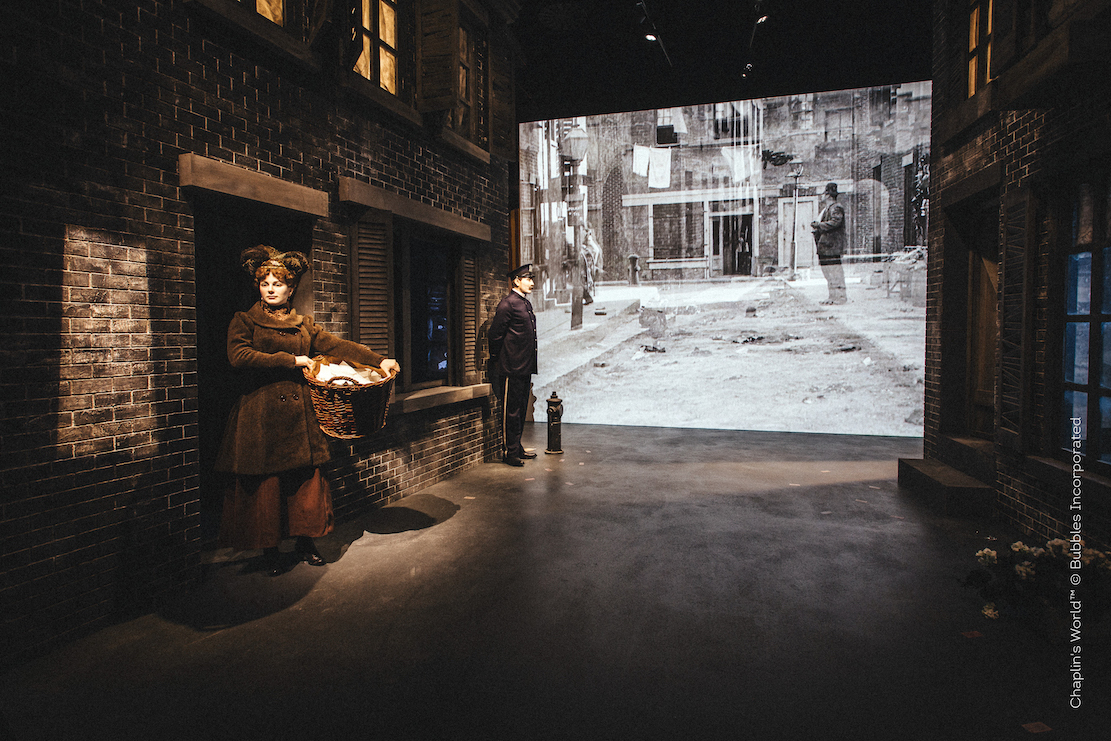 and, after
touring the museum, you have the pleasure of
actually visiting the 35-acre estate called Manoir
de Ban, where Chaplin retired to with his family
in 1953, at a time when his political and personal
life came under fire during the McCarthy Era.
and, after
touring the museum, you have the pleasure of
actually visiting the 35-acre estate called Manoir
de Ban, where Chaplin retired to with his family
in 1953, at a time when his political and personal
life came under fire during the McCarthy Era.
Declaring himself “a
citizen of the world,” Chaplin lived out his life
in Lausanne knowing he was still beloved by a
world he had given so much joy to. “I hope that
the entertainment I give has some lasting effect
on people,” he once said. “I hope
they see the beauty that I myself am seeking. I am
trying to express a beauty that embraces not only
physical characteristics and scenes, but the true
fundamental emotions of humanity. Beauty. Beauty
is what I am after.”
Hop the Number 201 bus in
Vevey, and in half an hour you’ll be in Montreux,
a resort city that has acquired all the
encrustations that international popularity has
brought, beginning in the post-Napoleonic Era. Montreux
was part of the Vevey District until 2006, when it
became the independent Riviera-Pays-d’Enhaut.
In the 20th century Montreux
became a draw for artists, writers and musicians,
which included Tchaikovsky, Noël Coward, Oskar
Kokoschka, A.J.
Cronin and Dame Joan Sutherland, all staying there
when the city was much less trammeled and much
more of an Alpine retreat. Today nearly half the
city’s population is composed of foreign
nationals, whose houses and condos have peppered
the hills in recent years.
After the establishment of the
Montreux Jazz Festival in 1967, the city became a
draw for scores of rock musicians who recorded
their albums at Mountain Studios; some,
like David Bowie, bought homes. The British group
Deep Purple wrote the song “Smoke on the Water”
after the city’s Casino burned down in 1971.
But by
far the rock-and-roll connection above all others
is to Freddie Mercury and Queen, which bought the
Mountain Studios in 1978. (It is now a charity
museum called “Queen: The Studio Experience.”) Mercury
had a second home in Montreux and, as
with the statue of Rocky Balboa in Philadelphia, a
visit to the statue of the late singer in the town
square has become a requisite tourist site (photo: Maude Rion),
with a plaque that reads, “He
appreciated the kindness and the discretion of the
townspeople and Montreux became a haven for him.”
A
walk along the lake is one of Montreux’s principal
charms, though the sidewalk along the Grand Rue is
now lined with shops of varying taste and price.
The one stop one must make is to visit the great
and historic 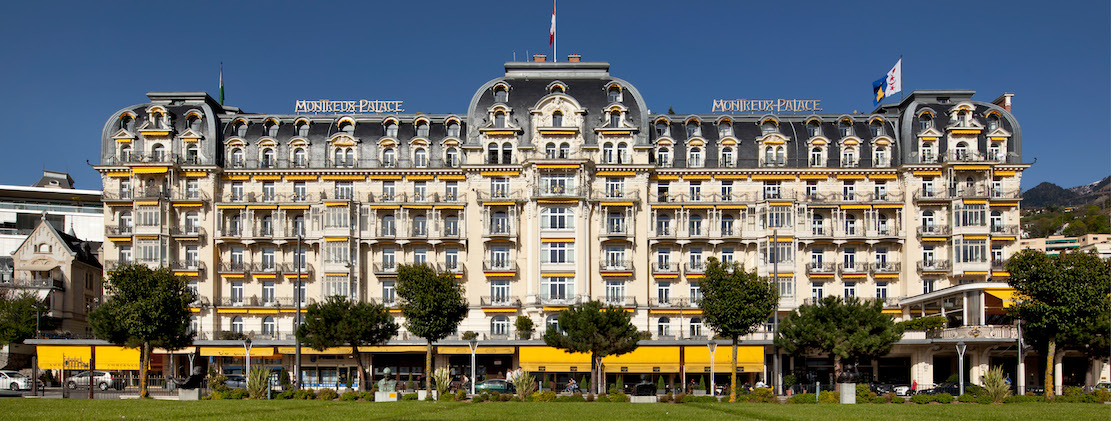 Fairmont Le
Montreux Palace Hotel (left), which opened in 1906 and
became the haunt of European royalty and society.
During World War I the hotel was used as a shelter
for wounded Allied soldiers, but by the 1920s it
had again become one of the most luxurious
caravansaries, host to many international
conferences. In World War II it was again used as
a hospital. Deep renovations were made in 1994 and
consistently since, with a Winter Garden opened
over the Grand Hall in 2001.
Fairmont Le
Montreux Palace Hotel (left), which opened in 1906 and
became the haunt of European royalty and society.
During World War I the hotel was used as a shelter
for wounded Allied soldiers, but by the 1920s it
had again become one of the most luxurious
caravansaries, host to many international
conferences. In World War II it was again used as
a hospital. Deep renovations were made in 1994 and
consistently since, with a Winter Garden opened
over the Grand Hall in 2001. New, award-winning
restaurants and bars were added in the first
decade of the present century, with a
multi-million-dollar renovation ending in 2014. (I
shall be writing about where to stay and eat in
Vevey and Montreux soon.)
New, award-winning
restaurants and bars were added in the first
decade of the present century, with a
multi-million-dollar renovation ending in 2014. (I
shall be writing about where to stay and eat in
Vevey and Montreux soon.)
The Castle is easily reached on foot (about 45 minutes from Montreux), car (there is free parking), train, bus or by boat. The latter is certainly the loveliest, most romantic way to approach the Castle, which is always the case anywhere on the beautiful Lake Leman.
NEXT WEEK: WHERE TO STAY AND EAT IN VAUD
❖❖❖
Creamery Aims for the Sweet and Boozy
By John Mariani
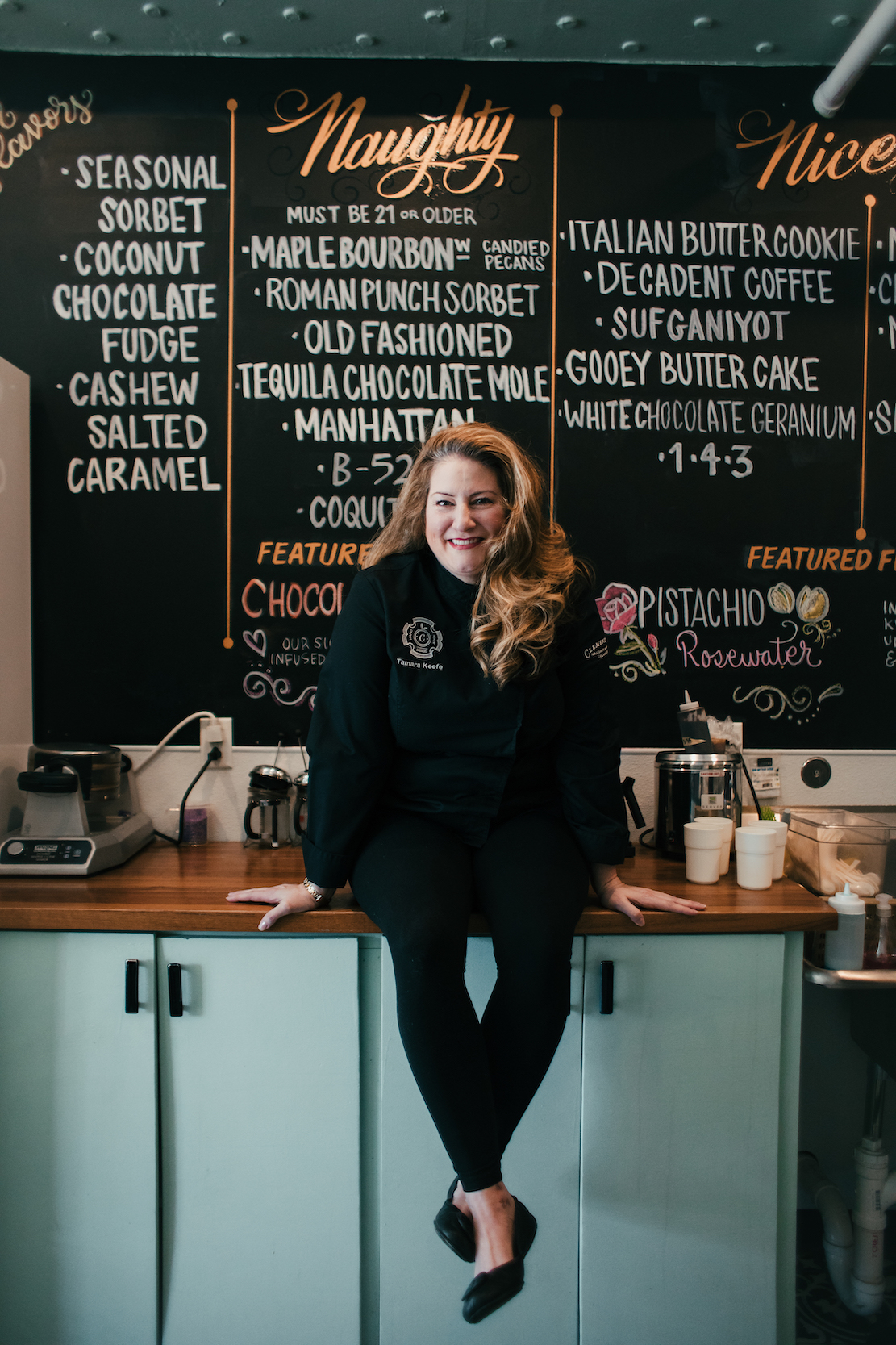
That’s how it turned out for Tamara Keefe, 43, who left a job as senior brand manager for Abbott Nutrition’s $70 million Ensure Oncology business to open Clementine’s Naughty & Nice Creamery in her native St. Louis, Missouri. Now with three units, Keefe has already won several top awards for Best Ice Cream for flavors like Italian Butter Cookie, Midnight Pleasures and Boozy Banana Rum.
I interviewed Keefe about her decision to take the leap from the corporate safety net into artisanal ice cream making
Q: Why did you
switch from a stable, high-paying corporate
job to take such a chance on making ice
cream?
TK: I have
been making ice cream my whole life. When
I was a child, ice cream entirely changed my
sense of community and, therefore, sense of
self. We grew up below the poverty line. After
church on Sundays, the other families in our
community would meet at the local ice cream
parlor. I remember tugging on my mom’s dress,
begging her for us to join them for ice cream,
not knowing the financial burden a trip to the
ice cream parlor would cause our family of
seven. I can still feel the sting of
loneliness from not being able to join the
rest of our community.
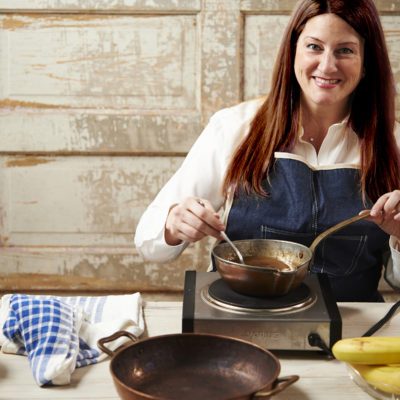 Then
one day, we stopped at a garage sale (that’s
where we got our clothes), and my mom ran
across an old hand-crank ice cream maker for
$2, and decided it was going home with us.
That was the day my life changed forever. We
made ice cream together as a family and the
sweetest tradition ensued.
Then
one day, we stopped at a garage sale (that’s
where we got our clothes), and my mom ran
across an old hand-crank ice cream maker for
$2, and decided it was going home with us.
That was the day my life changed forever. We
made ice cream together as a family and the
sweetest tradition ensued.
Word of our amazing
creations spread, and soon enough, rather than
going out for ice cream, the church families
began to gather at our house, with each family
bringing a different ingredient. I went from
social zero to hero! My whole sense of
community changed, because of ice cream. All
of a sudden, I had friends I’d never had
before, was invited to parties and became
popular. I discovered the power of ice cream
and I didn't even consciously know it.
By 2014 I was running a $70
million business, on the road all the time,
commuting back and forth from St. Louis to
Columbus, working 60-70-hour weeks, and
successfully climbing the corporate ladder.
Dream job, big company, big responsibilities,
big salary—everything I thought I ever wanted,
until I didn’t. Exhausted, unhappy, single, no
kids, no family, and rarely seeing my friends,
I was miserable. On a much-needed weekend
away, one of my closest friends turned to me
as I was ugly crying and said I should quit. Bewildered,
I asked, what would I do? My other girlfriend commented,
“You’re always complaining St. Louis doesn't
have great ice cream or ice
cream shops, and you are so happy when making
ice cream, no one makes it better than you, so
go do it.”
So that weekend, the four
of us wrote my business and marketing plan,
put together my financials and I resigned two
weeks later. I figured, what was the worst
thing that could happen? Yes, I could fail,
but I was highly employable, and could go
back. I had nothing to lose, except my pride
and money. The rest is history. In early 2014
I attended “Ice Cream College” at Penn State.
I didn't really set out to
create something new in the market. I set out
to create something better. Having worked in
the food industry, I knew how large CPGs
[Consumer Packaged Goods manufacturers] made
an inferior product, and how they reformulate
to cost cut, confuse and undermine consumers.
I knew I didn't want that. I wanted to do it
based on my values, a different way, but a
profitable way. I wanted to create a culture
and appreciation of makers, bakers and
creatives.
I had 20-plus years
marketing experience, created and launched new
products for CPG big brands, worked closely
with sensory science, product development,
packaging groups, food chemists, food
scientists, spent lots of time in and around
food manufacturing facilities, 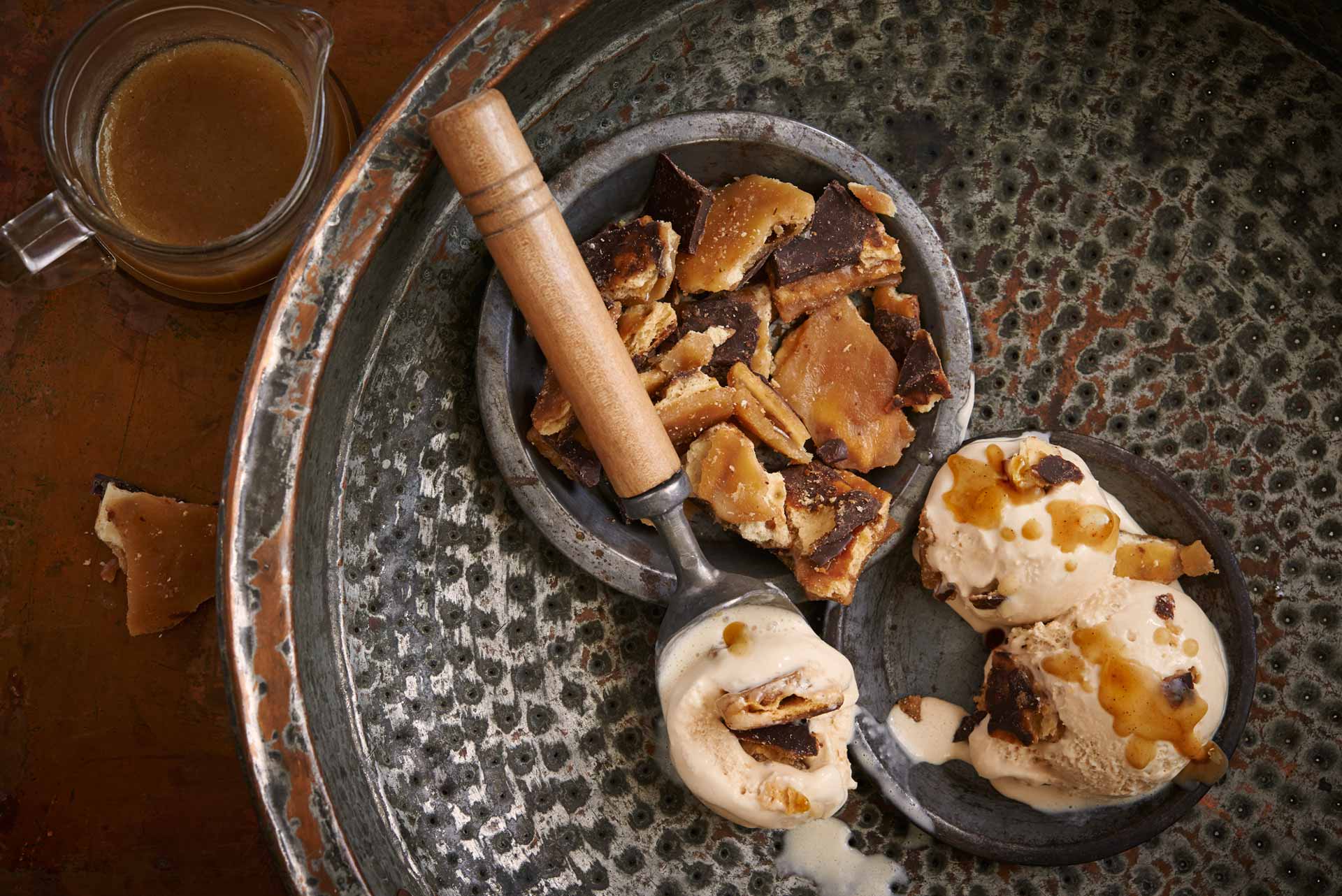 a
Six-Sigma Green-belt, and I was acutely aware
of food safety … and what it meant and the
importance of doing things the right and safe
way. It was the perfect storm so to speak. Oh,
and I am a trained master taster.
a
Six-Sigma Green-belt, and I was acutely aware
of food safety … and what it meant and the
importance of doing things the right and safe
way. It was the perfect storm so to speak. Oh,
and I am a trained master taster.
The Naughty component came
to fruition as I was just starting out. A
customer asked if I could infuse some rum into
a flavor I had. I said it wasn't possible. He
kept after me, and it was seeping into my
subconscious all the time, and I started to
think, “How can I make this happen?” After
all, I had had access to the best food
scientists, chemists and product development
people in the world. And I was familiar with
lots of new and emerging technologies in food
and how people were using them in creative
ways. I gathered my closest friends and over a
few bottles of wine, I started connecting the
dots, experimenting until we homed in on some
pretty innovative stuff. Once I realized we
had something, I knew it was an opportunity
and a really good one in a space where there’s
been little innovation since the invention of
Dippin’ Dots. So, I course- corrected,
reassessed and off I went.
Q: Describe what
makes your ice creams different from others
compared with national brands?
TK:
Clementine’s Naughty & Nice Creamery is
named around the two types of ice creams we
make. Naughty (boozy) and Nice (non-boozy). We
have a trade-secret process for infusing
alcohol into ice cream up to 18%. Our ice
creams really are boozy. A few companies have
tried to hang their hat on creating boozy ice
cream, but they use such little amounts it's
not noticeable, or they use liquor flavors, or
they cook it all off so it's a bit
misrepresented.
Additionally, we’re one of
only a handful of micro-creameries in the
country. There are qualifications you have to
meet in order to be one. First, it has to be
Small Batch
made in a real ice cream machine (batch
freezer), not some large continuous
mega-robotic machine that pumps thousands of
gallons of product through in a few minutes
that no one sees, or tastes, or quality
checks. I like to say ours is made by real
people with love, concern and care for the
quality and the taste of the product.
Handcrafted also means that
everything in the ice cream has to be hand
crafted and made. If there’s a pie, cake or
cookie in it, we make it, bake it and see it
through. We salt our own caramel and candy our
pecans. Or, for some flavors, we
collaborate to support another local artisan
maker and use their product in it.
All-Natural means the cream
needs to be made using no artificial
ingredients, and we are the only
ice cream maker in the state of Missouri that
is all-natural.
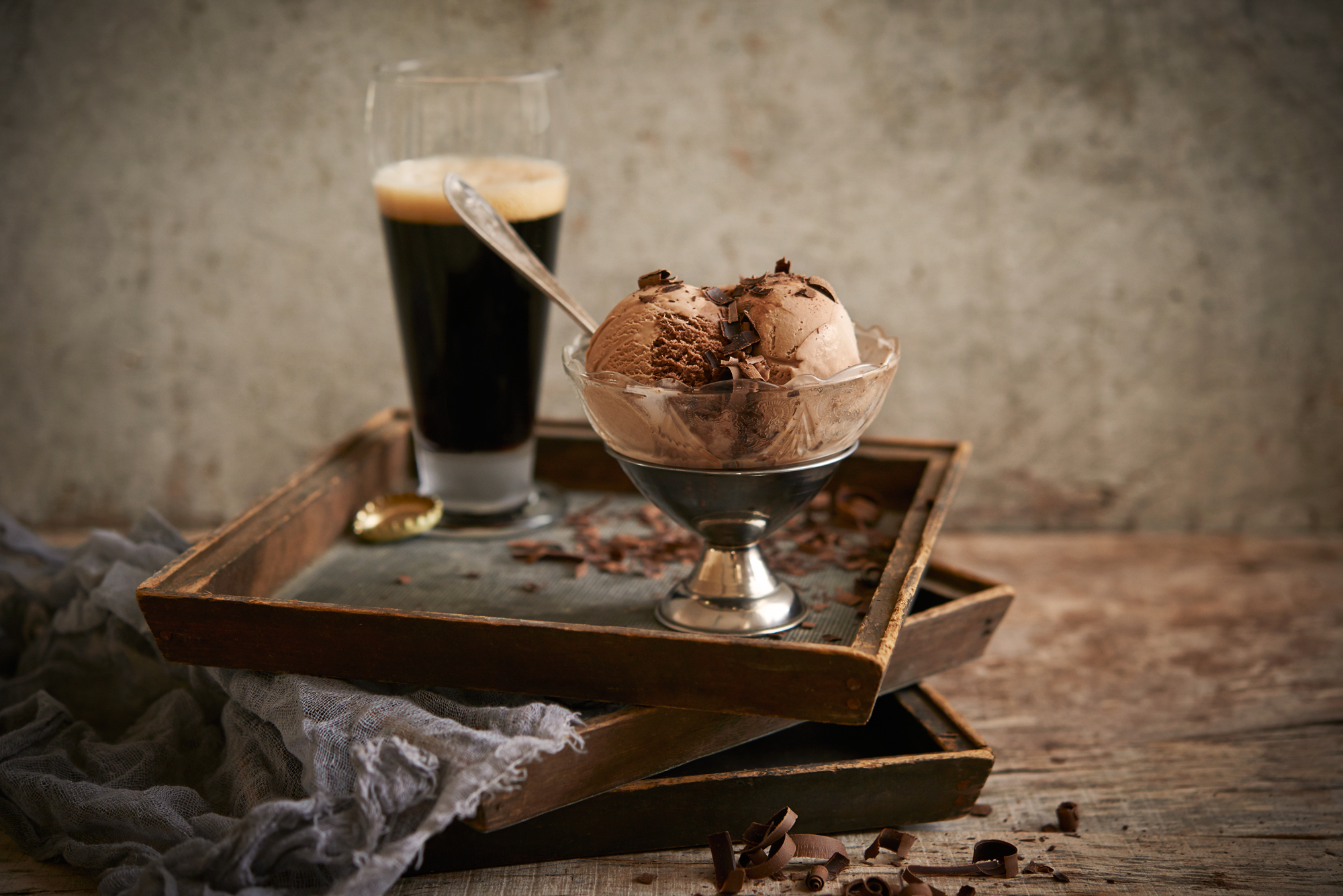 A micro-creamery has
to have less than 30% overrun, which is a
technical term that describes the air whipped
into the ice cream. Large commercial ice cream
manufacturers and most local ice cream shops
use 100% overrun, meaning that the pint you
get at the store is actually only 50% ice
cream; the rest is air. Ever had a cone that
instantly melted? That’s a great example
of 100% overrun. Big commercial brands and
most ice cream shops do that to get more
volume using less product.
A micro-creamery has
to have less than 30% overrun, which is a
technical term that describes the air whipped
into the ice cream. Large commercial ice cream
manufacturers and most local ice cream shops
use 100% overrun, meaning that the pint you
get at the store is actually only 50% ice
cream; the rest is air. Ever had a cone that
instantly melted? That’s a great example
of 100% overrun. Big commercial brands and
most ice cream shops do that to get more
volume using less product.
Our ice cream is made with
approximately 26-28% overrun, so when you
taste our pint of any flavor and compare it to
another, ours is heavier and denser.
Butterfat is the component
in ice cream that gives it the richness in
flavor, the creaminess or smooth texture, the
body and the ability not to melt so fast. It
coats your tongue and makes the flavor last
and gives it that great creamy mouth feel.
Additionally, it carries the other flavors in
the ice cream so you can enjoy it longer,
leaving you with a lingering aftertaste.
But it is very expensive, in contrast to
using 10% butterfat, which is what big
commercial manufacturers use. All of our ice
creams have between 16-18% butterfat, which is
why they are so decadent.
Q: Has the
corporate take-over of brands like
Häagen-Dazs compromised the original
product?
TK: Yes,
corporate takeovers and now venture capital
firms often do ruin the integrity of the
product. They are so guided by making the most
profit possible that they tinker with it
little by little, and before you know it, a
co-packer is making the product and it no
longer is what it once was. It is completely
different.
As for gelato, 99.995% of
all U.S. gelato makers use a premade dry
blended bag mix, chock full of artificial
colors, flavors, fillers, emulsifiers, etc.
It’s made start-to- finish in 25 minutes.
Authentic gelato takes a long time and is much
more expensive to make. Our ice cream takes
three days to make one batch.
For the modern millennial
consumer we are targeting, Häagen-Dazs exists
as an iconic name with a tremendous marketing
and sales legacy; however, in terms of a
product that can excite the palate for flavor
and mouth feel, it is no longer a benchmark.
Conventional wisdom in the
CPG world, in general, and food industry
specifically, would dictate that a corporate
takeover of a brand like Häagen-Dazs is a good
thing. Size used to be one of the most
important factors of success; however,
e-commerce and direct-to-consumer brands have
leveled the playing field, allowing smaller
brands to reach consumers without needing to
fight for limited shelf space or making large
investments on their brand. Additionally, the
millennial consumer has demanded a new level
of transparency for the products that they put
in and on their bodies. This transparency has
been best met by on-line born or upstart
brands that experience fast growth, which
consumers view as having a more authentic
story or healthier, fresher and more
eco-friendly offerings.
For me a pint of ice cream
will forever be a volume measure of 16 ounces.
In January of 2009, Häagen-Dazs downsized the
volume measure of its pint from 16 to 14
ounces, citing rising costs. That’s “customer
betrayal” and I will never again buy a “pint”
of Häagen-Dazs.
Q: Are there any
Alcohol and Tobacco Tax and Trade Bureau
rules about booze in ice cream?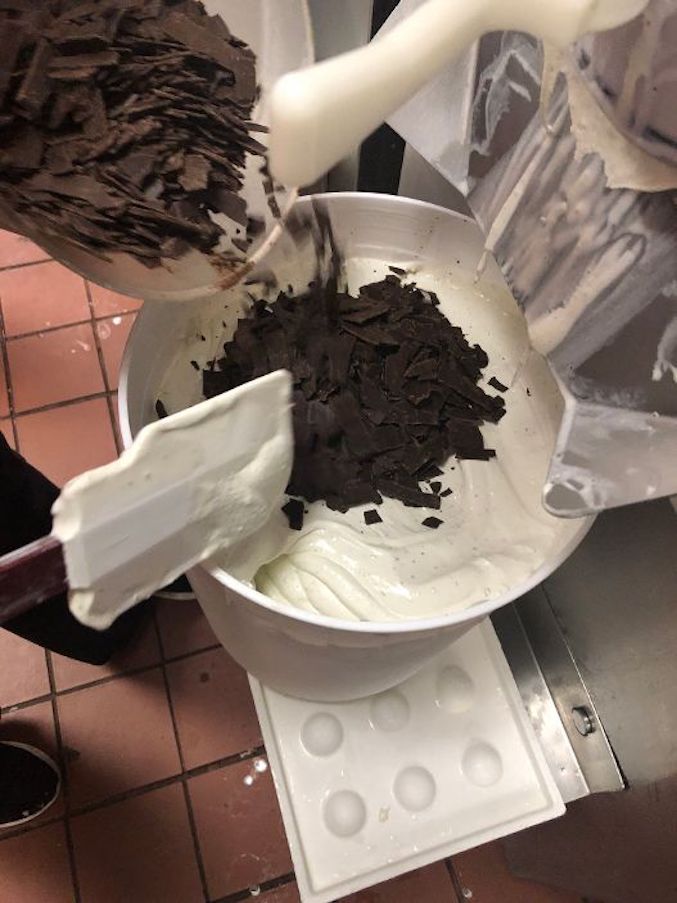
TK: Yes,
as to content by volume, by weight and whether
or not it is viewed as a beverage or food.
Additionally, it depends if the manufacturer
is looking for a drawback, meaning a tax
refund on the alcohol purchased.
In the beginning, we sent
all of our Naughty ice creams to the TTB for
analysis at great expense and time. We worked
with their team on our formulation and
understanding of what and how the overrun and
fat affect the alcohol by weight and volume.
We had a liquor license in the beginning
because we thought we had to, but ultimately
the TTB decided our ice cream was a food and
not
a beverage, and we did not make shakes in our
stores, which by nature changes the form into
a beverage. From the start, based on my own
values, I chose not to sample or serve anyone
under the age of 21. This practice continues
in all our stores, even though technically we
don’t have to. The silver lining is that it
has worked as a great marketing tool as well,
because now young adults look forward to
sharing their “21st” with us so they can try
and indulge in Clementine’s boozy ice cream.
Q: Explain: All of
the milk Clementine's uses is from local,
grass-fed, pasture-raised, hormone- and
RBST-free cows.
TK: We
work with small dairy farmers who choose to
raise herds differently than their big
commercial counterparts. By using dairy from
local, grass-fed, pasture-raised, hormone and
RBST-free cows you’re starting with the
purest, most unadulterated, best tasting,
non-altered, fresh dairy you can imagine. As a
result, our base dairy is so much cleaner,
richer, creamier. Its healthier, tastes
better, it benefits the cows, and our
environment.
Q: How did you
round up investment? Are you wholly
privately owned?
TK: I am
completely self-funded and solely owned by me.
I’ve invested almost 500k to date from my
personal savings, cashed out my 401k, and
continue to grow from profits. As we look more
to capitalize on our momentum and take
advantage of the market opportunity, we will
be considering smart outside investment that
can help take us to the next level in becoming
a national brand.
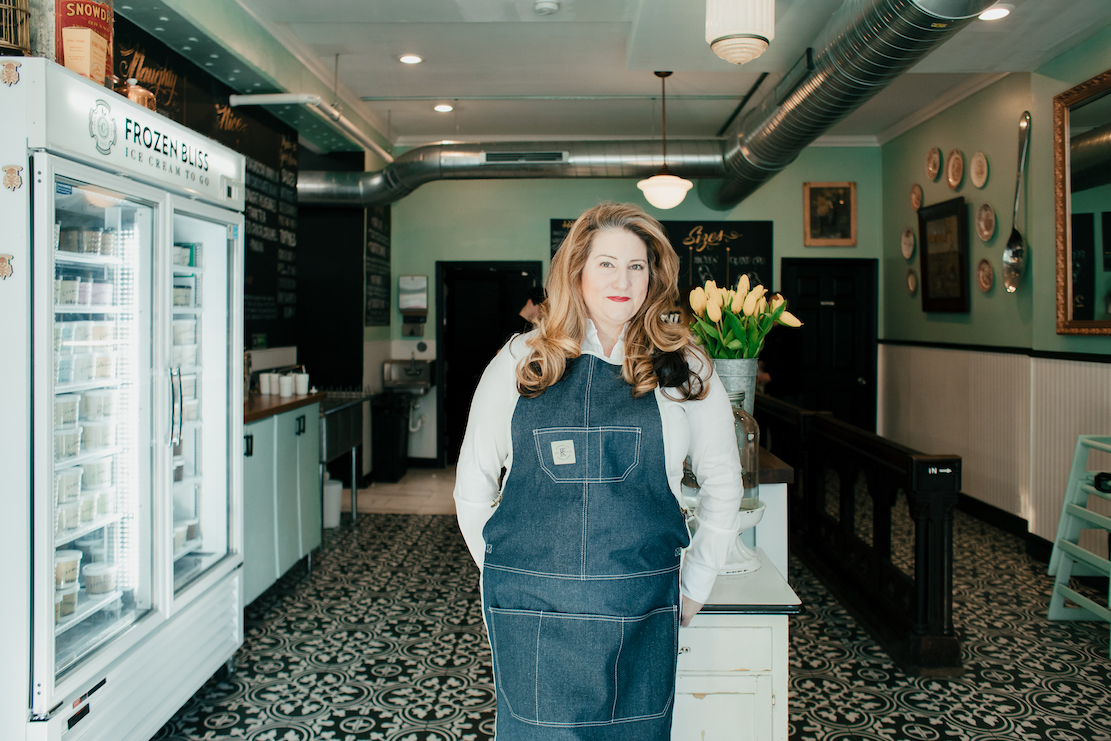 Q: Is the market
for new ice creams in America limitless?
What are your current overall U.S.
sales?
Q: Is the market
for new ice creams in America limitless?
What are your current overall U.S.
sales?
TK: In
America, there is never a barrier for an
excellent product that delivers on its
promise. Ice cream is a $14 billion market.
But overall consumption in the U.S. is
declining. On the flip side, the craft segment
keeps growing.
I believe consumers are reveling in all
the newcomers and their inventive market
niches. Their entry into the market have
stimulated growth, motivated excellence and
differentiation, and better products are being
produced, especially in niche markets like
vegan, low-carb and micro-creamery, which are
taking market share fast from the big brands.
As long as the artisan ice
cream business continues to deliver to
customers what they crave—the flavors,
ingredients and experiences underrepresented
in the hyper consolidated ice cream
market—then there is no limit to its growth.
I opened my first shop in
May 2015, second in July of 2017, and my third
this month in May 2019, with our fourth coming
along in July. Our sales are around $2 million
to date. My initial goal is to do $10 million
in revenue from 12 shops, and an entry into
grocery channel within five years, with the
ultimate goal of $50 million, 50 shops,
grocery and online expansion in 10 years.
That is, unless another opportunity
comes our way that is better than I have
charted for us now.
Q: But won’t
expansion nationally compromise what is now
a small artisanal company?
TK: For
us, no; we will be better than we are now. At
the moment, we have different expansion plans
and have seen one other artisanal ice cream
maker on the West Coast whom we respect a lot
expand the way we are planning to. Their
values mirror ours. They are choosing to
expand mindfully and authentically. The end
result will be a national presence without
compromising the best parts of being small. I
can’t wait to see how high is “high”!
❖❖❖
By John Mariani
RESERVE CUT
Setai Hotel
40 Broad Street
212-747-0300
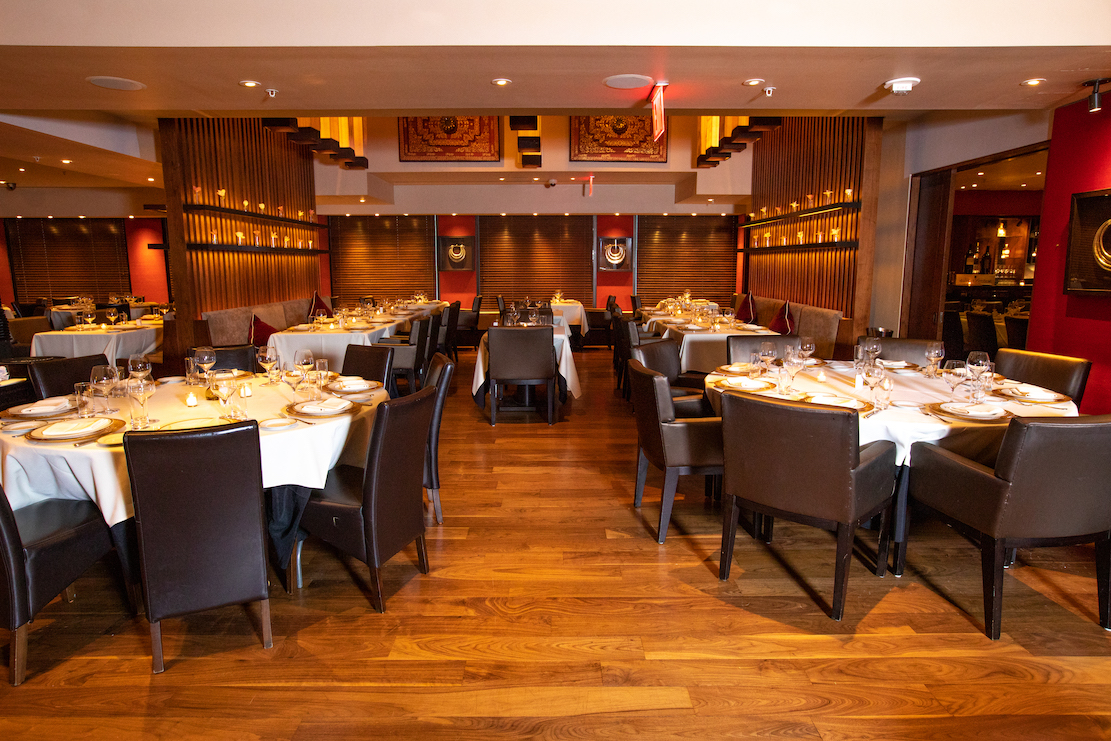
Since 2013 Reserve
Cut has been one of handsomest restaurants in
the Financial District, and with the addition
of chef Richard Farnabe, a veteran of Daniel,
Jean-Georges and Picholine, its food has never
been better. This is a
kosher steakhouse, but working within rules
that only affect dairy and shellfish products,
Farnabe brings a new sophistication and
variety to the menu.
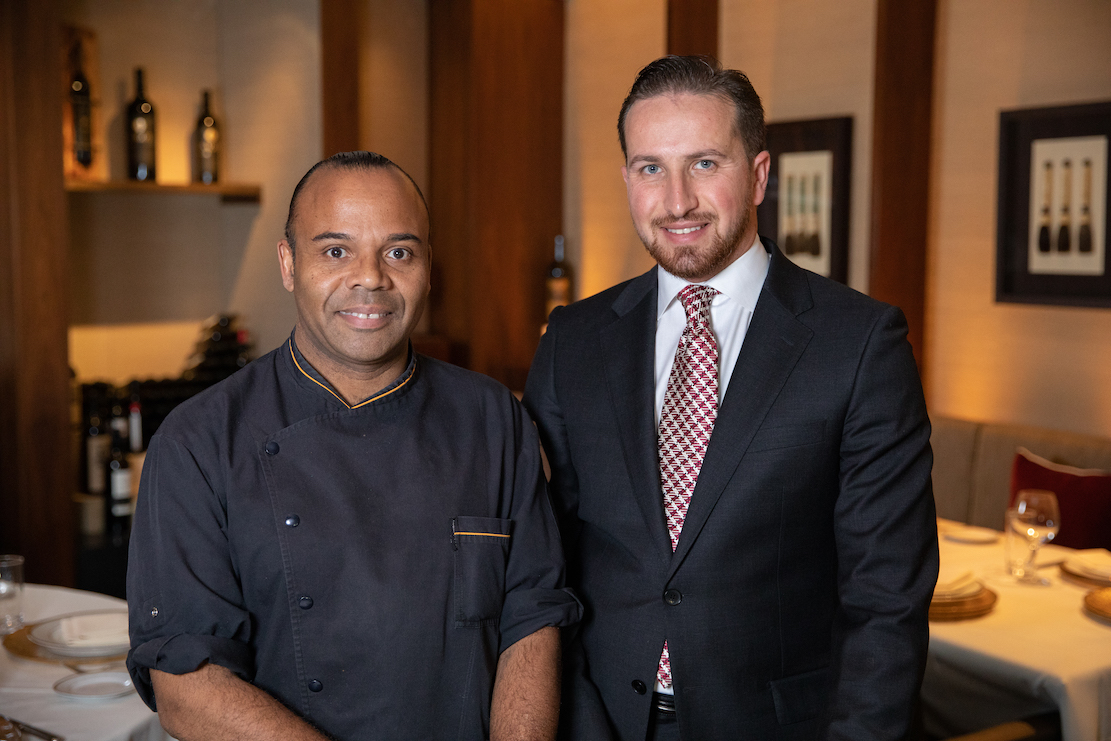 Owner
Albert Allaham (with Farnabe, left), who is a
descendant of master butchers going back two
centuries in Damascus and the owner of The
Prime Cut market in Brooklyn, has access to
the very best products, so you can be sure that
because those ingredients are kosher, they must
meet very high standards, from the USDA Prime
beef to the sushi-grade tuna.
Owner
Albert Allaham (with Farnabe, left), who is a
descendant of master butchers going back two
centuries in Damascus and the owner of The
Prime Cut market in Brooklyn, has access to
the very best products, so you can be sure that
because those ingredients are kosher, they must
meet very high standards, from the USDA Prime
beef to the sushi-grade tuna.
The sprawling restaurant uses
a canny contrast of shadow and light, wood and
glass, with dominant colors of deep reds and
rich browns to give a dramatic flow to the two
principal dining rooms. They are bisected by a
glittering corridor of glass cases containing an
exceptional wine cache (below) that shows off the real
quality of modern-day kosher wines, from both
Israel and California. 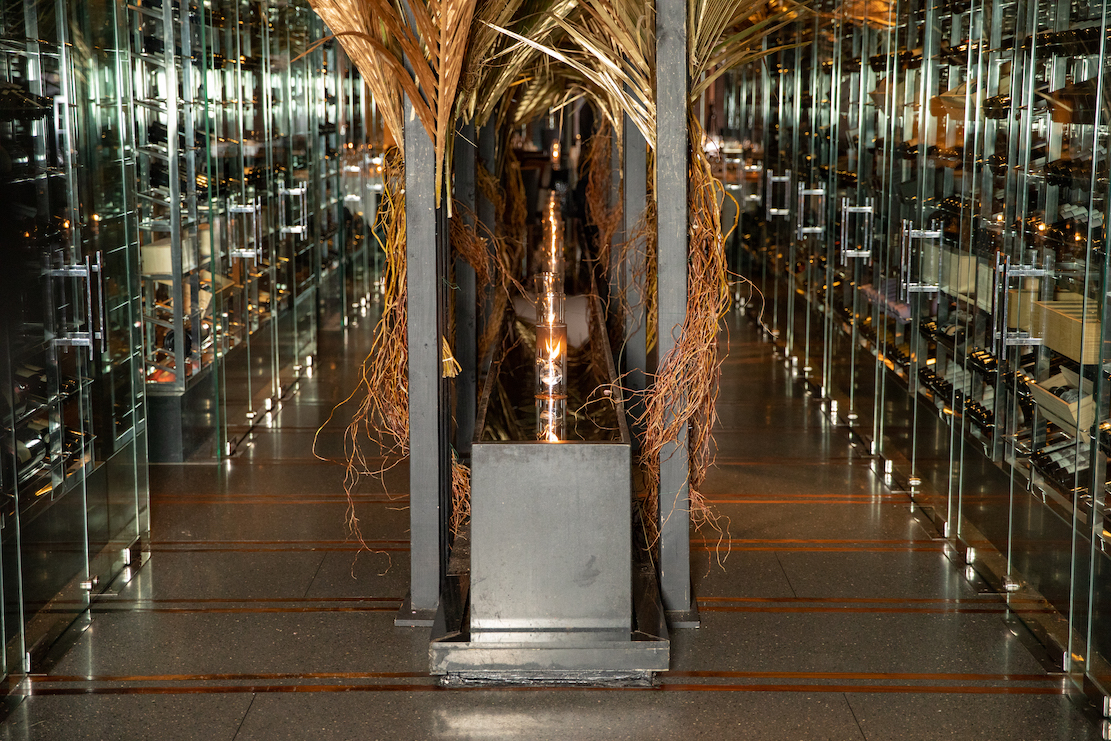 Thick white
tablecloths, votive candles and roomy leather
chairs add measurably to the comfortable luxury
of the place. Puzzling, then, that the wine
glasses are cheap, when better examples are so
easily available for a restaurant.
Thick white
tablecloths, votive candles and roomy leather
chairs add measurably to the comfortable luxury
of the place. Puzzling, then, that the wine
glasses are cheap, when better examples are so
easily available for a restaurant.
The menu is as huge as a
mini-version of Cheesecake Factory, with dozens
of sushi and sashimi options, a score of
appetizers, six non-steak offerings and a dozen
variations on steak, including wagyu galore. In
addition, there are nightly specials. Farnabe
does command a very large kitchen with a brigade
of cooks, but I doubt regulars or newcomers care
that there are so many items to choose from. The
margin of error seems risky.
Nevertheless, the sushi
dishes we had were all excellent, beautifully
presented and nicely seasoned, from signature
rolls like the crunchy Volcano of spicy tuna,
avocado, aïoli and tempura ($23) to generous
platters of sashimi and sushi like the Reserve
Chef’s Selection ($44). Also in the Asian mode
with Latino underpinnings is a delightful item
called “Blackened Tuna Bites” with avocado, pico
de gallo, wonton chip and aïoli ($24).
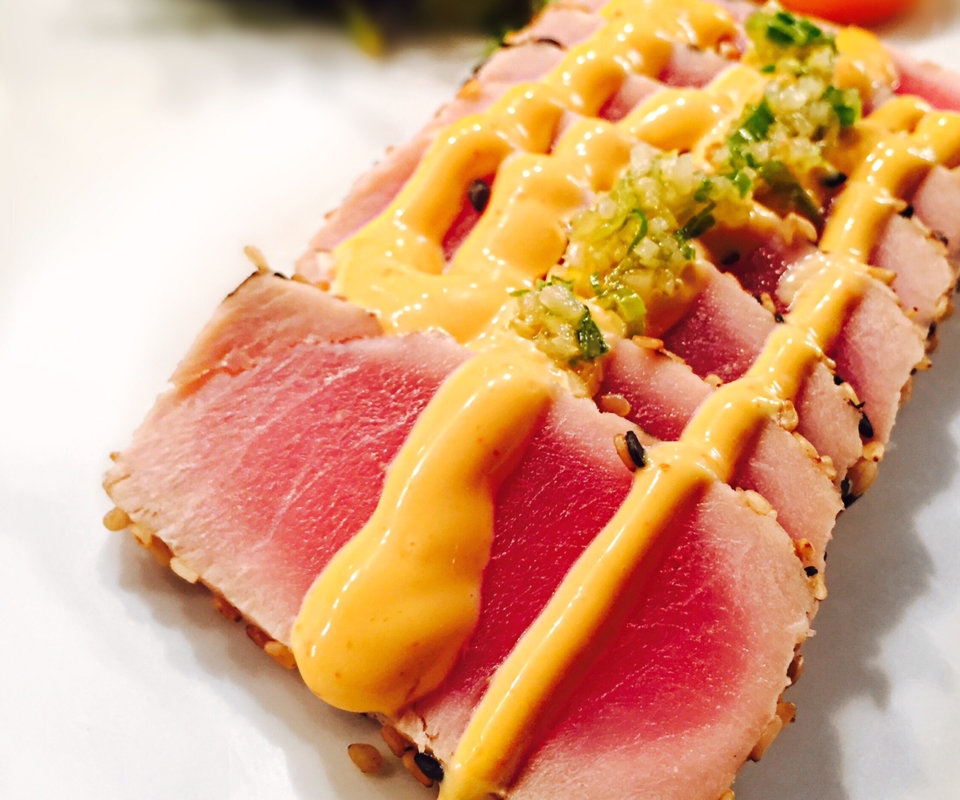 Then
there is a whole section called “Appetizers from
the Land,” like Moroccan lamb merguez sausages
with slowly braised giant beans, red pepper and
tomato ($28); very juicy, flavorful short ribs
tacos with a tangy-sweet grilled pineapple salsa
($26); and wagyu short rib steamed buns with
pickled cucumber to cut the rich fattiness of
the meat ($26).
Then
there is a whole section called “Appetizers from
the Land,” like Moroccan lamb merguez sausages
with slowly braised giant beans, red pepper and
tomato ($28); very juicy, flavorful short ribs
tacos with a tangy-sweet grilled pineapple salsa
($26); and wagyu short rib steamed buns with
pickled cucumber to cut the rich fattiness of
the meat ($26).
Getting to the main courses,
there are three fish offerings and roasted
chicken. But, despite all else on the menu, this is a
steakhouse, one that proudly serves first-rate
Colorado rack of lamb with a smoked chile glaze,
mashed minted English peas and romesco sauce
($76). I
don’t think the otherwise excellent veal chop
($65) gains much from being “bone marrow
crusted,” which makes it a little steamy.
All steaks are USDA Prime,
aged for a minimum of 36 days on premises,
including a 14-ounce boneless ribeye with a
delectable confit of trumpet royale mushrooms
and crispy parsley ($65). Farnabe is also very
good at side dishes that show off his talents.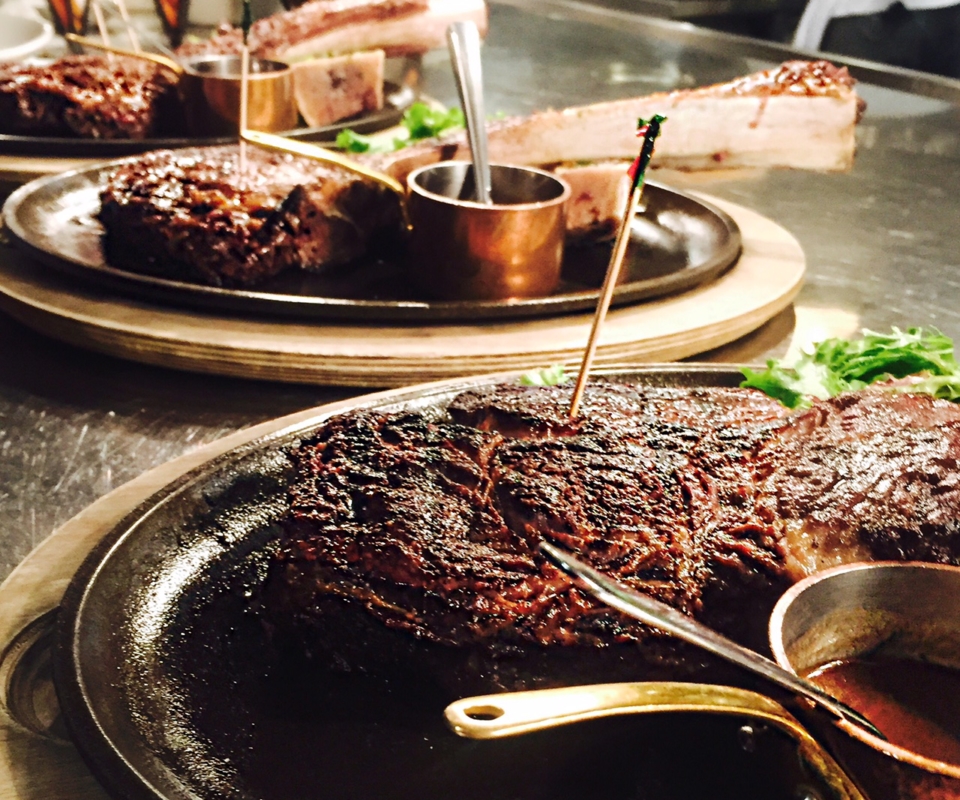
Regular readers of this
column well know both my yawning lack of
interest in and suspicions about wagyu beef,
which is now ubiquitous in American steakhouses.
The wagyu cuts at Reserve Cut are touted as
“Renowned for their unprecedented flavor
produced by expending traditional Japanese all
natural holistic techniques,” which sounds a bit
more spiritual than beef descriptions usually
get. In any case, the modest prices—$70 for a
10-ounce cut with half roasted garlic and
aromatic herbs—indicates this meat is probably
not from one of those vaunted Kobe Prefectures
so many steakhouses claim to have. For that,
Reserve Cut has a 10-ounce Miyazaki cut for
$149.
Because kosher demands that
no dairy can be served with meat, desserts are
not the high point of a meal at Reserve Cut,
although the chocolate tasting of chocolate
caramel tart, peanut butter ice cream and molten
chocolate cake ($18) is definitely worth
sharing.
I
am very happy to see that Richard Farnabe is now
in the kitchen at Reserve Cut, making this
beautiful, swank restaurant an attraction even
for those who are not in the mood for a great
USDA Prime steak. And with a wine list so rich
in modern Israeli and kosher American wines, it
becomes a singular destination in the Financial
District.
Open for lunch Mon.-Fri., for dinner Sun.-Thurs.
❖❖❖
ARE EASY TO LOVE BUT NOT EASY TO FIND
By John Mariani
Photo: Maude Rion
Before going off to Switzerland
this spring, I was fortunate to attend a dinner
in New York held by the Swiss Wine Commission to
show off modern viniculture from a country whose
wines are so rarely written about—not from a
lack of interest but from a lack of wines to
write about.
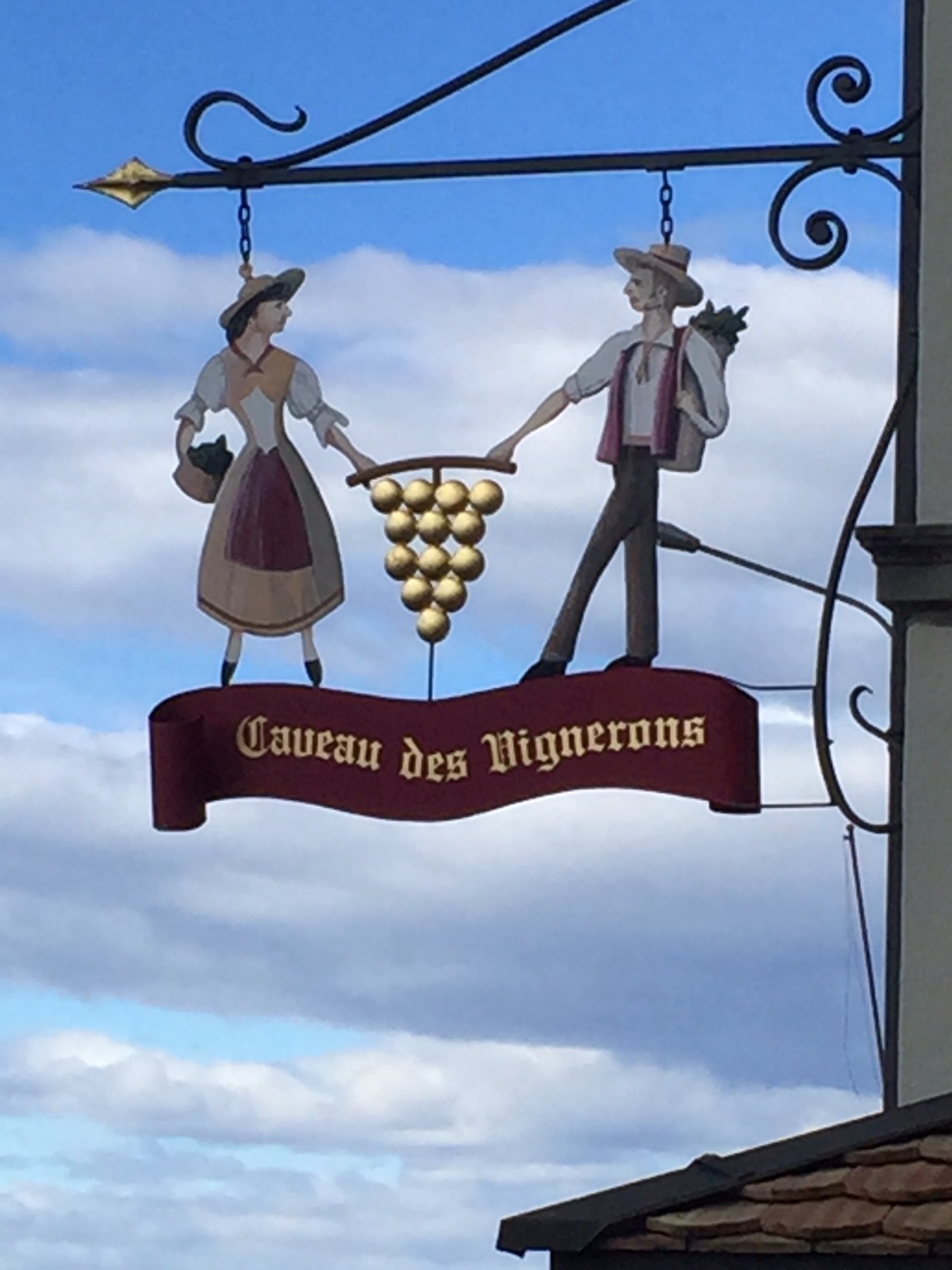 As I
learned over dinner at Nomad restaurant in
Manhattan with several Swiss vintners, the problem
is that the Swiss pretty much drink every drop of
wine they make, with only about 2 percent exported
to the rest of the world. This was particularly
disappointing because the wines I tasted that
evening were of high quality and varietal caliber.
As I
learned over dinner at Nomad restaurant in
Manhattan with several Swiss vintners, the problem
is that the Swiss pretty much drink every drop of
wine they make, with only about 2 percent exported
to the rest of the world. This was particularly
disappointing because the wines I tasted that
evening were of high quality and varietal caliber.
With
a dish of foie gras was served a Provins Valais
Petite Arvine 2015 from Valais and Château
d’Auvernier Chardonnay 2017 from Neuchâtel; with a
mushroom dish two vintages (2013 and 2016) of
Jean-René Germanier Balavaud Cayas Réserve Syrahs
from Valais; with a beef and Swiss chard dish came
Angelo Delea Carato Merlot 2015 from Ticino and
Valais Mundi Sa Electus Red Blend 2015 from
Valais; with the cheese course of Sbrinz, Domaine
La Colombe Petit Clos Chasselas La Cȏte 2017 from
Vaud and Château d’Suvernier Chasselas 2018 from
Neuchâtel; finally, a chocolate cake with Domaine
La Colombe Pinot Noir 2017 from Vaud and Vini
Delea La Bruna Grappa from Ticino.
These constituted more Swiss
wines than I had tasted in the past five years.
So, when I arrived in Switzerland, I was eager to
drink nothing but Swiss wines for the next ten
days, mostly spent in Vaud. The region,
sub-divided into eight smaller regions,
encompasses 3,800 hectares of vineyards—a quarter
of all wine-growing areas in the country—with more
than 3,000 parcels that produce 39.6 million
bottles annually, all overseen by the Vaudois Wine
Office.
Tours of this beautiful, deeply
sloping wine territory that winds on the Corniche
Road along Lake Leman—a UNESCO World Heritage
Site—are as popular with the locals on weekends as
with Europeans and other travelers. Most of the
wine-producing villages open their cellars to the
public from Easter through October.
My
wife and I had a marvelous guide named Fabienne
D’Alleves, who showed us through the small
villages and vineyards and introduced 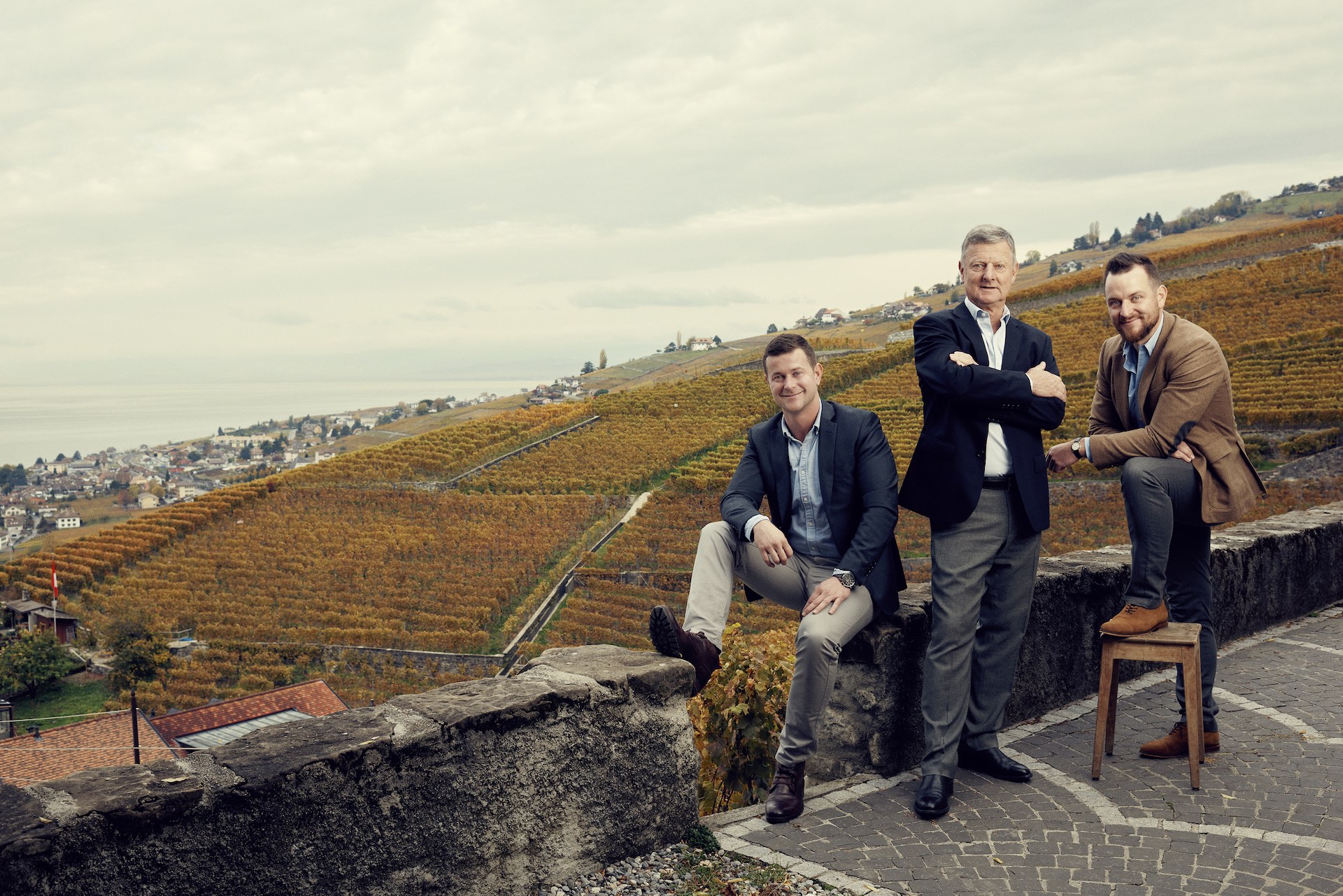 us to Luc Massy, who with his sons
Benjamin and Gregory (right), owns Luc Massy Vins in
the quiet village of Epesses-Lavaux. The estate
dates back to a 17th
century Clos du Boux farmhouse that originally
sold wine in bulk. In 1995, Luc Massy brought
the winery into modern focus, “marrying
tradition with a 21st century viewpoint. Our
responsibility is not to preserve a fixed world,
but to make it live, to evolve it, to improve it
even more, and above all to share it.” It is a
modest-size winery, using only natural yeasts,
and producing 9,700 liters per year.
us to Luc Massy, who with his sons
Benjamin and Gregory (right), owns Luc Massy Vins in
the quiet village of Epesses-Lavaux. The estate
dates back to a 17th
century Clos du Boux farmhouse that originally
sold wine in bulk. In 1995, Luc Massy brought
the winery into modern focus, “marrying
tradition with a 21st century viewpoint. Our
responsibility is not to preserve a fixed world,
but to make it live, to evolve it, to improve it
even more, and above all to share it.” It is a
modest-size winery, using only natural yeasts,
and producing 9,700 liters per year.
If any Swiss varietal is due
for an emergence in the world market it is white
Chasselas (sometimes called Dorin in Vaud), of
which I enjoyed many that week. Massy’s Clos de
Boux Grand Cru (about $39 in the U.S., if you can
find it) has a typically refreshing acidic edge,
the minerality of the terroir, with no residual
sugar and 12% alcohol.
Massy’s Chemin de Fer from the
Dézaley region ($59), also made from Chasselas, is
even more complex, because the vineyards get more
sun and grapes can stay longer on the vine before
harvesting. Luc Massy said these wines have
remarkable longevity. “We have bottles going back
to 1968 and they are delicious,” he said.
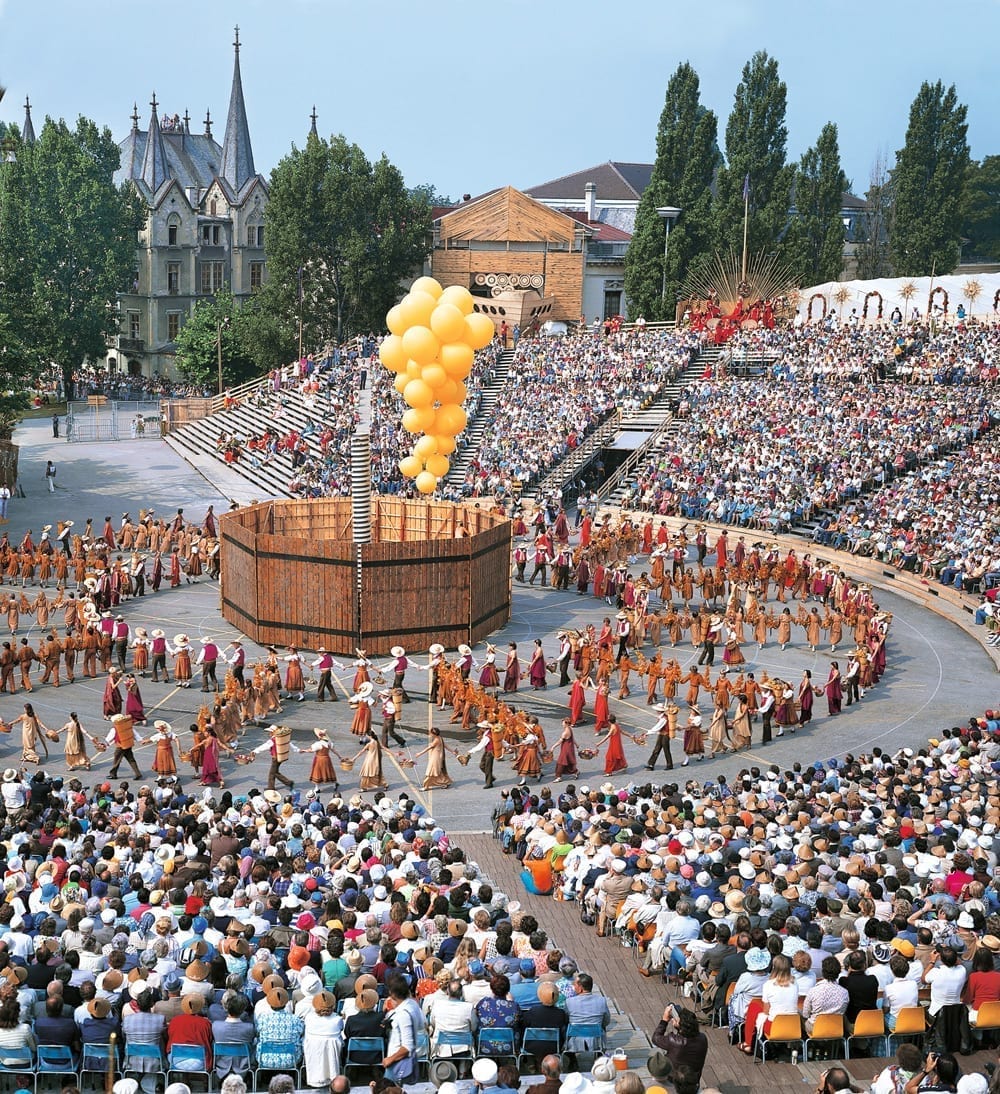 Crêt Bailly ($35) from Epesses is
made from Gamay, the red grape best known for its
eminence in Beaujolais. In Vaud it becomes a very
graceful wine, with light to medium body, good
fruit and acid, at 13% alcohol. Lighter
in body but quite rounded and full of minerality
is Sous Les Rocs ($36) from grapes in the region
of Saint-Saphorin.
Crêt Bailly ($35) from Epesses is
made from Gamay, the red grape best known for its
eminence in Beaujolais. In Vaud it becomes a very
graceful wine, with light to medium body, good
fruit and acid, at 13% alcohol. Lighter
in body but quite rounded and full of minerality
is Sous Les Rocs ($36) from grapes in the region
of Saint-Saphorin.
The restaurants in Switzerland
proudly list many Swiss wines on their menus. At
Pavillon in Zurich’s Baur au Lac Hotel, my wife
and I enjoyed a splendid dinner of dishes like
lemony scallops with a Fläscher Sauvignon Blanc
2015 from Graubüunden; rosemary-scented rabbit
with a Domain Les Hutins Pinot Noir Premier Cru
Barrique 2016 from Dardagny; and veal Metternich
with a Guido Brivio Merlot Platinum 2012 from
Ticino.
These only hinted at the variety of superb wines made in Switzerland, and I urged my Swiss hosts—begged, actually—to release more of them into the market. They deserve not just recognition for being good Swiss wines but for also being very good wines of any kind.
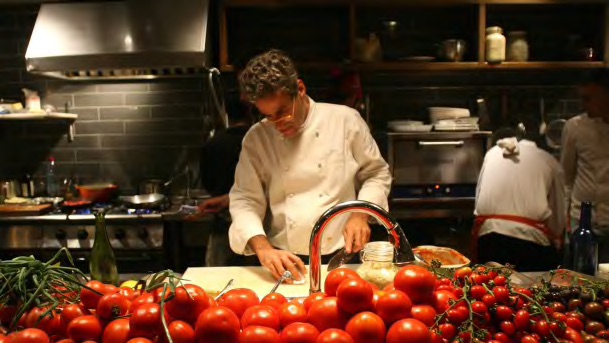 THINGS CHEFS TALK ABOUT AND TO
THINGS CHEFS TALK ABOUT AND TO
“Our kitchen is asking two main questions: Is a tomato a
tomato? For sure, a tomato is not a tomato,” he says.
“So if it is not a tomato, what it is? Once you find
that, you can ask the second question. What does the
tomato want? And that is the long journey of our
creation.”— Chef Eyal Shani (left) interviewed by Chris Cowley, “At
the New Restaurant HaSalon, the Food Carries ‘the Energy
of Happiness,’” New
York Magazine (April 11, 2019).
"On a good day the wind blows the fumes
right out to sea, but the residents of St. Mary’s,
Newfoundland aren’t always that lucky.
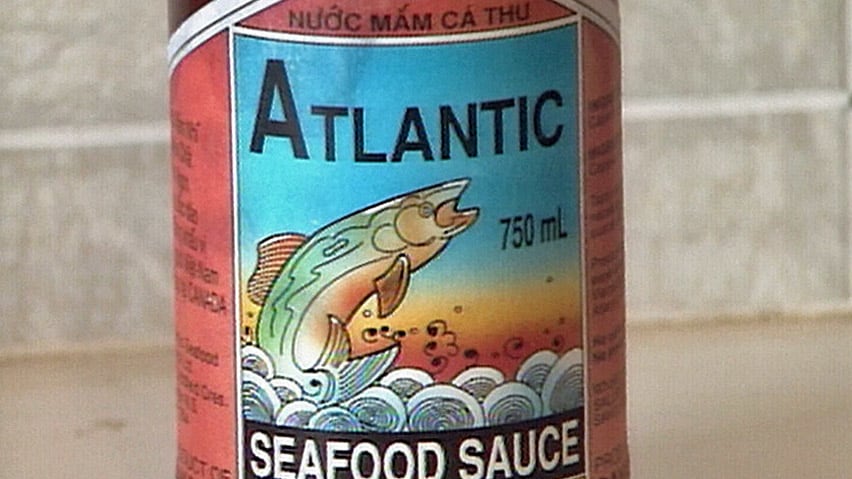 When the wind
comes from the northeast, it carries the stench of
over 100 vats of rotten, nearly 20-year-old fish sauce
into the homes and business of everyone in the tiny
community. The reason: the hollowed-out shell of what
was once the Atlantic Seafood Sauce Company, which
closed its doors in 2001."—Madeline Muzzi, "A Town
Drowned in the Smell of Fish Sauce; What will it take
to clean up Newfoundland’s abandoned fish sauce
factory?" Eater.com
(5/23/19)
When the wind
comes from the northeast, it carries the stench of
over 100 vats of rotten, nearly 20-year-old fish sauce
into the homes and business of everyone in the tiny
community. The reason: the hollowed-out shell of what
was once the Atlantic Seafood Sauce Company, which
closed its doors in 2001."—Madeline Muzzi, "A Town
Drowned in the Smell of Fish Sauce; What will it take
to clean up Newfoundland’s abandoned fish sauce
factory?" Eater.com
(5/23/19)
Wine
Column Sponsored by Banfi Vintners
SANGIOVESE
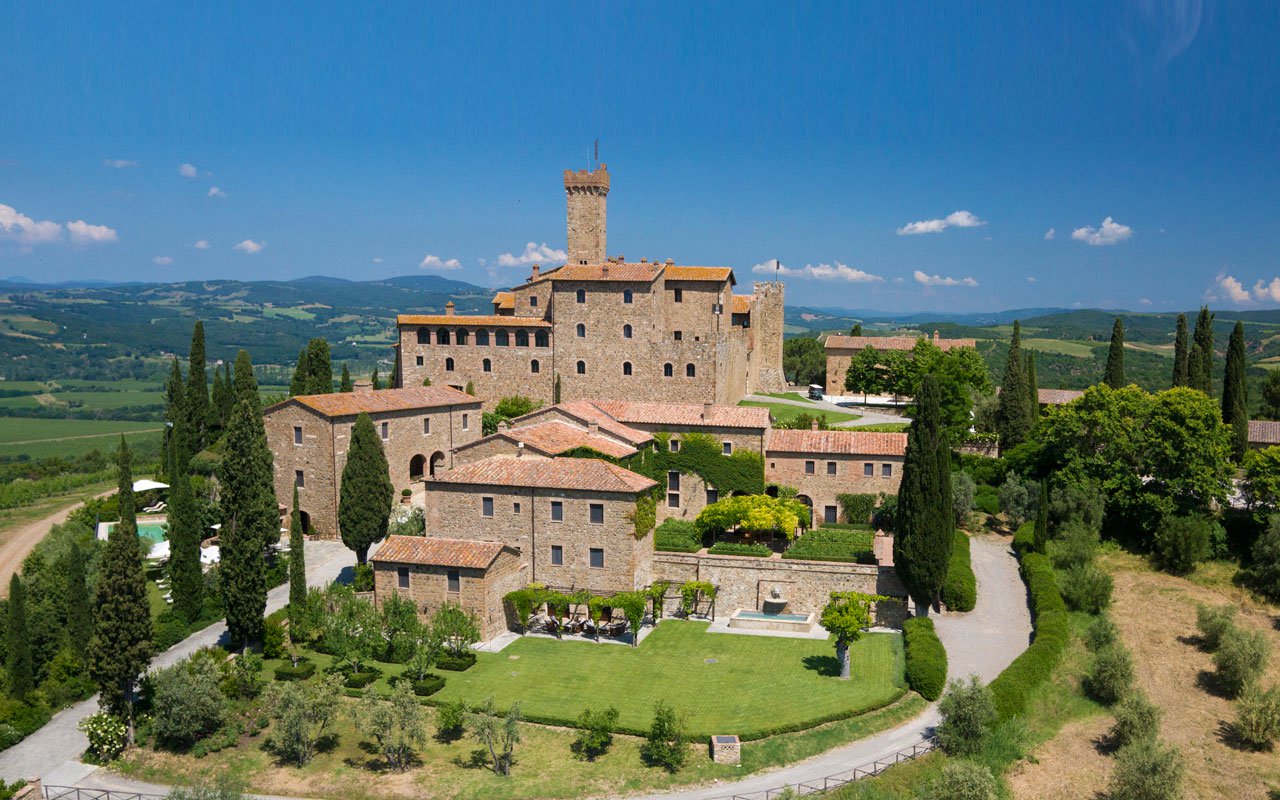 Wine is a joy year-round but
in cooler weather one
grape varietal has really taken center stage in
my daily activities – that most Italian of
grapes, Sangiovese, and its ultimate expression
– Brunello di Montalcino.
Wine is a joy year-round but
in cooler weather one
grape varietal has really taken center stage in
my daily activities – that most Italian of
grapes, Sangiovese, and its ultimate expression
– Brunello di Montalcino.
From mid-September through mid-October,
the Sangiovese grown for our various styles of red
wines are be harvested, culminating with the top
selection for Brunello di Montalcino.
Second, cooler weather here means
it is time to start enjoying more red wines and
especially Sangiovese based wines. That
includes Banfi’s cru of Brunello, Poggio alle Mura,
literally the cream of the crop of our Sangiovese
vineyards. Alongside our Poggio alle Mura Brunello di
Montalcino, this year we introduced two more wines
from the cru Poggio alle Mura – a Rosso di Montalcino
and a Riserva of Brunello. Rosso is sort of like the
younger brother of Brunello, also made from 100%
Sangiovese grapes but usually a selection from younger
vines and the wine is aged only two years compared to
the four required for Brunello. The
Riserva, on the other hand, is an even more selective
harvest of Sangiovese, and ages for an additional year
before release.
What is so special about this cru
Poggio alle Mura?
Well, it is the result our over 30 years of
ongoing research at my family’s vineyard estate,
Castello Banfi.
When we first began planting our vines there in
the late 1970s studies from the University of Bordeaux
indicated which strains of many varietals we should
plant, based on the soil type and microclimate of each
vineyard. But
when it came to the region’s native Sangiovese, there
was only local lore, no scientific research. So we took
it upon ourselves to figure out this vine, and set off
on three decades of incredibly detailed research.
We started
with 600 apparent variations on Sangiovese, because it
is so susceptible to variations in weather and soil,
and narrowed that down to 160 truly genetically
different clones.
We planted a vineyard with two rows of each
type, made wine from each of them, and charted the
differences – remember, you only get one chance a year
to make wine, so this took time.
It took about ten years to get some
concrete results, though we continue to experiment
today and always will – you never stop learning in
science and nature!
Once we determined which were the best,
complementary clones that could be planted together to
make the best Brunello, we chose to plant them in what
we determined to be the optimal vineyard sites. Coincidentally,
the best soils and climate conditions are in the
slopes surrounding the medieval fortress today known
as Castello Banfi, known since Etruscan times as
Poggio alle Mura – the walled hilltop. Hence the
name of our most special “cru” of Brunello,
representing a synthesis between tradition and
innovation.
Though the focus of this study was
our Brunello, all of our Sangiovese-based wines,
including the super Tuscans SummuS, Cum Laude, and
Centine, benefitted from this work. And that’s
the third reason for celebrating Sangiovese this
month, for the range of wonderful reds that usher us
into autumn! One
wine in particular was inspired by our research – the
BelnerO, a Sangiovese dominant blend with what I like
to call a kiss of Cabernet and a whisper of Merlot. We grow the
grapes a little differently for BelnerO than for
Brunello, make the wine with less oak aging and
released it earlier from the winery, providing a
counterpoint to Brunello and a lovely terroir-driven
wine in its own right.
If you
know Italians, you know that by nature we are
multi-faceted, varying in mood, and always passionate. As a
nation, we span from the hot sunny beaches of Sicily
near the African coast to the rugged mountains and
Alpine ski slopes of Trentino-Alto Adige in the north. Sangiovese
is grown in almost all of Italy’s regions and reflects
the unique nature of each; it is most famous
(rightfully so) in Tuscany, yet even there it reflects
the nuances of each hilltop, valley and subzone. It has
something a little different to say in Brunello than
Chianti, Morellino than Vino Nobile di Montepulciano,
Rosso di Montalcino than Super Tuscan blends.
Here is a smattering of
Sangiovese-based wines that you may wish to get to
know better, reflecting a spectrum that appeals to
every occasion, every taste, and every budget. We can
assure you that the conversation will never become
boring. 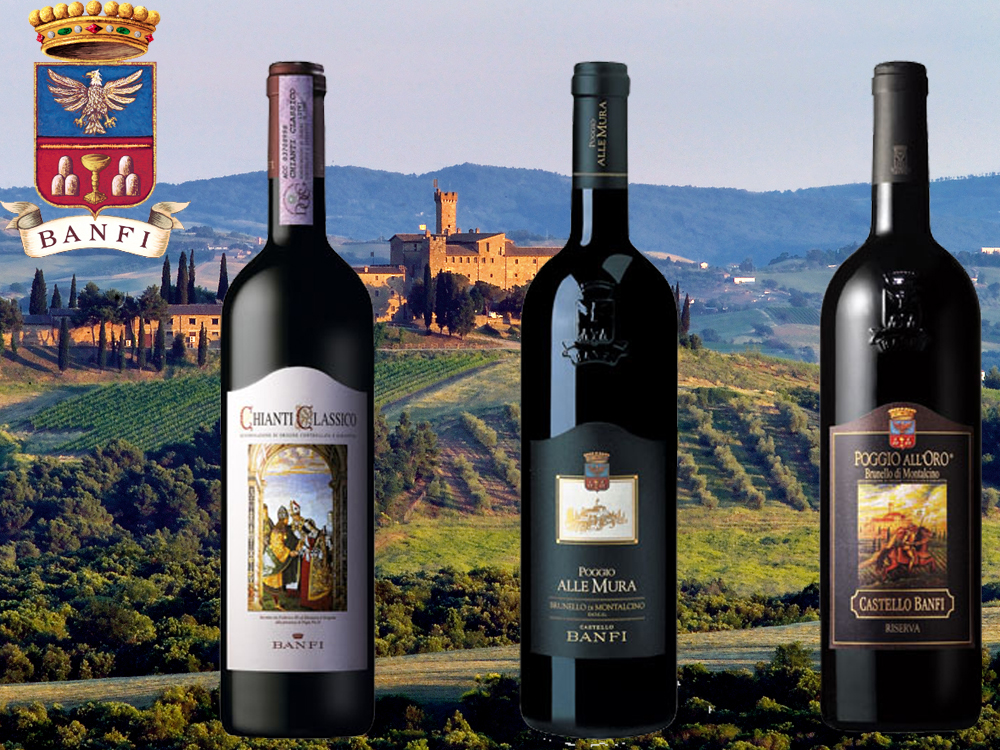
Recommendations for Celebrating
Sangiovese
BelnerO Proprietor’s Reserve Sangiovese
– A refined
cuvée of noble red grapes perfected by our pioneering
clonal research. This dark beauty, BelnerO, is
produced at our innovative winery, chosen 11
consecutive years as Italy’s Premier Vineyard Estate.
Fermented in our patented temperature controlled
French oak and aged approximately 2 additional years.
Unfiltered, and Nitrogen bottled to minimize sulfites.
Castello Banfi Brunello di Montalcino –
Rich, round, velvety and intensely
aromatic, with flavor hints of licorice, cherry, and
spices. Brunello di Montalcino possesses an intense
ruby-red color, and a depth, complexity and opulence
that is softened by an elegant, lingering aftertaste.
Unfiltered after 1998 vintage.
Castello Banfi Rosso di Montalcino – Brunello's "younger brother," produced
from select Sangiovese grapes and aged in barrique for
10 to 12 months. Deep ruby-red, elegant, vibrant,
well-balanced and stylish with a dry velvety
finish.
Poggio all’Oro Brunello di Montalcino
Riserva – A single vineyard selection of our most
historically outstanding Sangiovese, aged five years
before release, the additional year more than that
required of Brunello including 6 months in barrel and
6 months more in bottle to grant its “Riserva”
designation. Incredible
elegance and harmony. Intense with lots of fruit and
subtle wood influence. Round, complete, well balanced
with hints of chocolate and berries. Unfiltered after
1998.
Poggio alle Mura – The first tangible result of years of
intensive clonal research on Montalcino’s native
Sangiovese grape.
Estate bottled from the splendidly sun drenched
vineyards surrounding the medieval Castello from which
it takes its name.
The Brunello
di Montalcino is seductive, silky and smoky. Deep ruby
in color with an expressive bouquet of violets, fruits
and berries as well as cigar box, cedar and exotic
spices. The Rosso
di Montalcino is also intense ruby red. The bouquet
is fresh and fruity with typical varietal notes of
cherry and blackberry, enriched by more complex hints
of licorice, tobacco and hazelnut. It is full
bodied, yet with a soft structure, and a surprisingly
long finish. The Poggio alle Mura Brunello di Montalcino
Riserva is deep ruby red with garnet
reflections and a rich, ample bouquet that hints of
prune jam, coffee, cacao and a light balsamic note. It is full
and powerful, with ripe and gentle tannins that make
it velvety and harmonious; this wine is supported by a
pleasing minerality that to me speaks soundly of that
special hillside in southern Montalcino.
SummuS – A wine of towering elegance, SummuS is an
extraordinary blend of Sangiovese which contributes
body; Cabernet Sauvignon for fruit and structure; and
Syrah for elegance, character and a fruity bouquet. An elegant,
complex and harmonious red wine.
Cum Laude – A complex and elegant red which graduated
“With Honors,” characterized by aromas of juicy
berries and fresh spices.
Centine – A Cuvee that is more than half
Sangiovese, the balanced consisting of equal parts of
Cabernet Sauvignon and Merlot. Vinified in
a firm, round style that easily accompanies a wide
range of dishes, this is a smooth and fragrantly
satisfying wine with international character, and a
perennial favorite at my own dinner table.
Banfi Chianti Superiore – The “Superiore” designation signifies
stricter government regulations regarding production
and aging requirements, as compared to regular
Chianti. An
intense ruby red wine with fruit forward aromas and
floral notes. This
is a round wine with well-balanced acidity and fruit.
Banfi Chianti Classico – An enduring classic: alluring
bouquet of black fruit and violets; rich flavors of
cherry and leather; supple tannins and good acidity
for dining.
Banfi Chianti Classico Riserva – Produced from select grapes grown in the
"Classico" region of Chianti, this dry, fruity and
well-balanced red has a full bouquet reminiscent of
violets.
Fonte alla Selva Chianti Classico – This is our newest entry into the Chianti
arena, coming from a 99 acre estate in Castellina, the
heart of the Chianti Classico region. The wine is
a captivating mauve red that smells of cherry, plum
and blackberry with hints of spice. It is
round, full and balanced with very good
acidity.
Col di Sasso – Sangiovese and Cabernet Sauvignon. Luscious,
complex and soft with persistent notes of fruit and
great Italian style structure.
Any of John Mariani's books below may be ordered from amazon.com.
 The Hound in Heaven
(21st Century Lion Books) is a novella, and
for anyone who loves dogs, Christmas, romance,
inspiration, even the supernatural, I hope you'll find
this to be a treasured favorite. The story
concerns how, after a New England teacher, his wife and
their two daughters adopt a stray puppy found in their
barn in northern Maine, their lives seem full of promise.
But when tragedy strikes, their wonderful dog Lazarus and
the spirit of Christmas are the only things that may bring
his master back from the edge of despair.
The Hound in Heaven
(21st Century Lion Books) is a novella, and
for anyone who loves dogs, Christmas, romance,
inspiration, even the supernatural, I hope you'll find
this to be a treasured favorite. The story
concerns how, after a New England teacher, his wife and
their two daughters adopt a stray puppy found in their
barn in northern Maine, their lives seem full of promise.
But when tragedy strikes, their wonderful dog Lazarus and
the spirit of Christmas are the only things that may bring
his master back from the edge of despair. WATCH THE VIDEO!
“What a huge surprise turn this story took! I was completely stunned! I truly enjoyed this book and its message.” – Actress Ali MacGraw
“He had me at Page One. The amount of heart, human insight, soul searching, and deft literary strength that John Mariani pours into this airtight novella is vertigo-inducing. Perhaps ‘wow’ would be the best comment.” – James Dalessandro, author of Bohemian Heart and 1906.
“John Mariani’s Hound in Heaven starts with a well-painted portrayal of an American family, along with the requisite dog. A surprise event flips the action of the novel and captures us for a voyage leading to a hopeful and heart-warming message. A page turning, one sitting read, it’s the perfect antidote for the winter and promotion of holiday celebration.” – Ann Pearlman, author of The Christmas Cookie Club and A Gift for my Sister.
“John Mariani’s concise, achingly beautiful novella pulls a literary rabbit out of a hat – a mash-up of the cosmic and the intimate, the tragic and the heart-warming – a Christmas tale for all ages, and all faiths. Read it to your children, read it to yourself… but read it. Early and often. Highly recommended.” – Jay Bonansinga, New York Times bestselling author of Pinkerton’s War, The Sinking of The Eastland, and The Walking Dead: The Road To Woodbury.
“Amazing things happen when you open your heart to an animal. The Hound in Heaven delivers a powerful story of healing that is forged in the spiritual relationship between a man and his best friend. The book brings a message of hope that can enrich our images of family, love, and loss.” – Dr. Barbara Royal, author of The Royal Treatment.
 |
The Encyclopedia of American Food and Drink by John F. Mariani (Bloomsbury USA, $35) Modesty forbids me to praise my own new book, but let me proudly say that it is an extensive revision of the 4th edition that appeared more than a decade ago, before locavores, molecular cuisine, modernist cuisine, the Food Network and so much more, now included. Word origins have been completely updated, as have per capita consumption and production stats. Most important, for the first time since publication in the 1980s, the book includes more than 100 biographies of Americans who have changed the way we cook, eat and drink -- from Fannie Farmer and Julia Child to Robert Mondavi and Thomas Keller. "This book is amazing! It has entries for everything from `abalone' to `zwieback,' plus more than 500 recipes for classic American dishes and drinks."--Devra First, The Boston Globe. "Much needed in any kitchen library."--Bon Appetit. |
"Eating Italian will never be the same after reading John Mariani's entertaining and savory gastronomical history of the cuisine of Italy and how it won over appetites worldwide. . . . This book is such a tasteful narrative that it will literally make you hungry for Italian food and arouse your appetite for gastronomical history."--Don Oldenburg, USA Today. "Italian
restaurants--some good, some glitzy--far
outnumber their French rivals. Many of
these establishments are zestfully described
in How Italian Food Conquered the World, an
entertaining and fact-filled chronicle by
food-and-wine correspondent John F.
Mariani."--Aram Bakshian Jr., Wall Street
Journal.
"Equal parts
history, sociology, gastronomy, and just
plain fun, How Italian Food Conquered the
World tells the captivating and delicious
story of the (let's face it) everybody's
favorite cuisine with clarity, verve and
more than one surprise."--Colman Andrews,
editorial director of The Daily
Meal.com. "A fantastic and fascinating
read, covering everything from the influence
of Venice's spice trade to the impact of
Italian immigrants in America and the
evolution of alta cucina. This book will
serve as a terrific resource to anyone
interested in the real story of Italian
food."--Mary Ann Esposito, host of PBS-TV's
Ciao
Italia. "John Mariani has written the
definitive history of how Italians won their
way into our hearts, minds, and
stomachs. It's a story of pleasure over
pomp and taste over technique."--Danny Meyer,
owner of NYC restaurants Union Square
Cafe, The Modern, and Maialino.
|
 |
 |
 |
 |
 |
 |
 |
 |
 Everett Potter's Travel Report:
Everett Potter's Travel Report: 
 Eating Las Vegas
JOHN CURTAS has been covering the Las Vegas
food and restaurant scene since 1995. He is
the co-author of EATING LAS VEGAS – The 50
Essential Restaurants (as well as
the author of the Eating Las Vegas web site: www.eatinglasvegas.
He can also be seen every Friday morning as
the “resident foodie” for Wake Up With the
Wagners on KSNV TV (NBC) Channel 3 in
Las Vegas.
Eating Las Vegas
JOHN CURTAS has been covering the Las Vegas
food and restaurant scene since 1995. He is
the co-author of EATING LAS VEGAS – The 50
Essential Restaurants (as well as
the author of the Eating Las Vegas web site: www.eatinglasvegas.
He can also be seen every Friday morning as
the “resident foodie” for Wake Up With the
Wagners on KSNV TV (NBC) Channel 3 in
Las Vegas.
MARIANI'S VIRTUAL GOURMET
NEWSLETTER is published weekly. Publisher: John Mariani. Editor: Walter Bagley. Contributing Writers: Christopher Mariani,
Robert Mariani, Misha Mariani, John A. Curtas, Gerry Dawes, Geoff Kalish,
and Brian Freedman. Contributing
Photographer: Galina Dargery. Technical
Advisor: Gerry
McLoughlin.
If you wish to subscribe to this
newsletter, please click here: http://www.johnmariani.com/subscribe/index.html
© copyright John Mariani 2019

